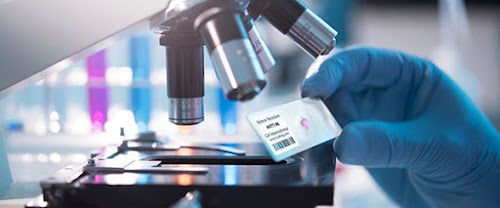Histopathology Techniques - Part 1
Histopathology Techniques:
Fixative produces the following effects:
Histology is the technique of examination of normal tissues at microscopic level.
Histopathology is examination of tissues for presence or absence of changes in the structure due to disease processes.
Both are done by examine thin sections of tissues which are colored differently by different dyes and stains.
.
Selected part of tissue (<4mm) thin is placed in steel or plastic capsules or cassettes and is subjected to the following sequential processing (Tissue processing)
- Fixation
- Dehydration
- Clearing
- Impregnation
- Embedding and Blocking
- Section cutting
- Routine staining
1. Fixation:
Any tissue removed from the body starts decomposing immediately because of loss of blood supply and oxygen, accumulation of products of metabolism, action of autolytic enzymes and putrefaction by bacteria.
Process of decomposition is prevented by fixation.
Fixation is the method of preserving cells and tissues in life-like condition as far as possible.
- Prevents putrefaction and autolysis.
- Hardens the tissue which helps in section cutting.
- Makes cell insensitive to hypertonic or hypotonic solution.
- Acts as a mordant.
- Induces optical contrast for good morphologic examination.
An ideal fixative has the following properties:
- It should be cheap and easily available.
- It should be stable and safe to handle.
- It should cause fixation quickly.
- It should cause minimal loss of tissue.
- It should not bind to the reactive groups in tissue which are meant for dyes.
- It should give even penetration.
- It should retain the normal color of the tissue.
Commonly used fixative are:
- Formalin
- Glutaraldehyde
- Picric acid (Bouin's fluid)
- Alcohol (Carnoy's fixative)
- Osmium tetraoxide
Formalin:
- This is the most commonly used fixative in routine practice.
- Formalin is commercially available as saturated solution of formaldehyde gas in water, 40% by weight / volume (w/v)
- This 40% solution is considered as 100% formalin.
- For fixation of tissues, a 10% solution is used which is prepared by dissolving 10 ml of commercially available formalin in 90 ml of water.
- It takes 6-8 hours for fixation of a thin piece of tissue at room temperature.
- The amount of fixative required required is 15-20 times the volume of the specimen.
Merits:
Rapidly penetrates the tissues.
Normal color of tissue is retained.
It is cheap and easily available.
Best fixative for neurological tissue.
Demerits:
Causes excessive hardening of tissues.
Causes irritation of skin, mucous membranes and conjunctiva.
Leads to formation of formalin pigment in tissues having excessive blood at an acidic pH Which can be removed by treatment of section with picric alcohol in solution of NaOH.
2. Dehydration:
- This is a process in which water from cells and tissues is removed so that this space is subsequently taken up by wax.
- Dehydration is carried out by passing the tissues through a series of ascending grades of alcohol 75%, 80%, 95% and absolute alcohol (100%).
- If ethyl alcohol is not available then methyle alcohol, isopropyl alcohol or acetone can be used.
3. Clearing:
- This is the process in which alcohol from tissues and cells is removed and is replaced by a fluid in which wax is soluble and it also makes the tissue transparent.
- Xylene is the most commonly used clearing agent.
- Tolulene, Benzene (carcinogenic), Chloroform (poisonous) and Cedar wood (expensive) can also be used as clearing agent.
4. Impregnation:
- This is the process in which empty spaces in the tissue and cells after removal of water are taken up by paraffin wax.
- This hardens the tissue which helps in section cutting.
- Impregnation is done in molten paraffin wax which has the melting point of 56 degree Celsius (54-62 degree celsius).
Follow me on social website:
Blogger Website: http://www.mltclinicalnotes.blogspot.com
Facebook Page: https://www.facebook.com/mltclinicalnotes
Instagram: https://www.instagram.com/mltclinicalnotes
YouTube Channel: https://www.youtube.com/mltclinicalnotes






Comments
Post a Comment
If you have any doubts, please let me know.